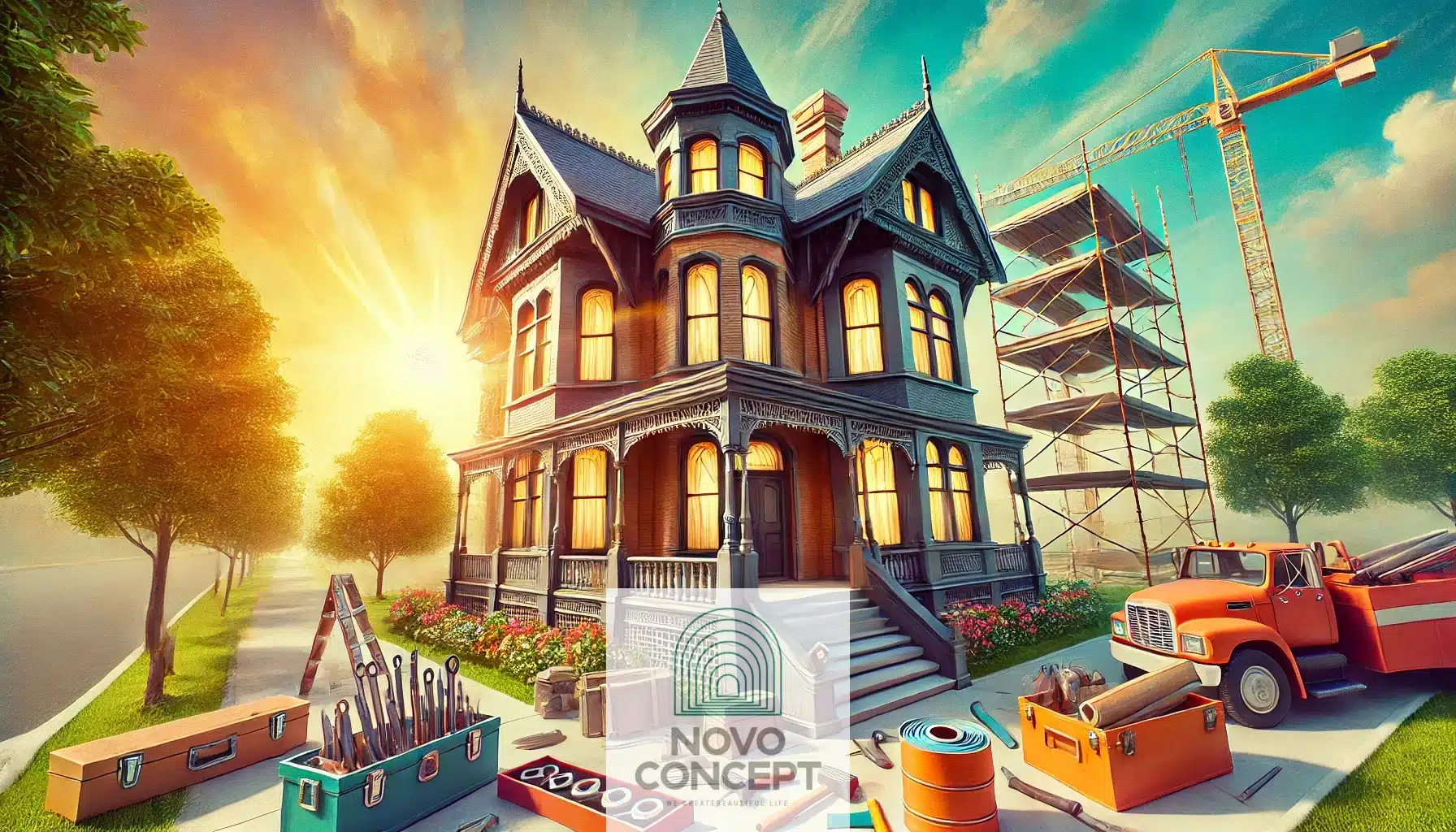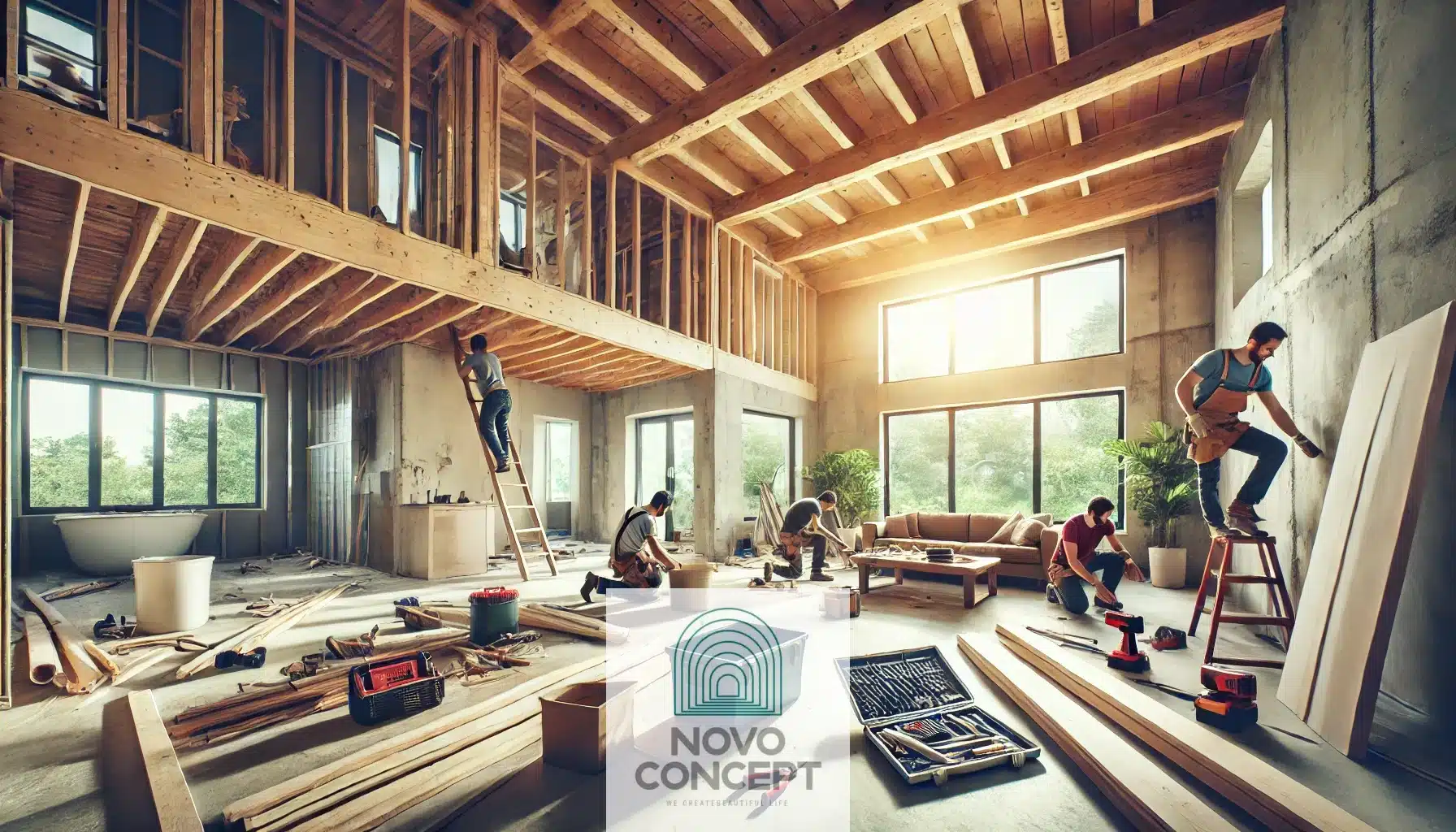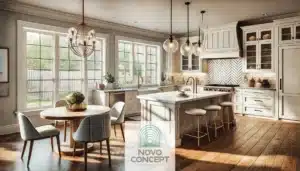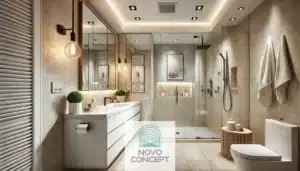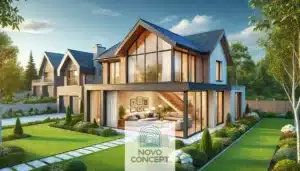Buying and renovating an old home is a dream for many. The charm and character of a classic Victorian or mid-century modern house are hard to resist, especially for those with a passion for restoration. Breathing new life into an old structure can be incredibly rewarding, but it’s not without its challenges. Beneath the surface of that timeless architecture might lie hidden dangers that can pose significant risks and increase the cost of your renovation project.
Older homes often harbor issues due to outdated building codes, wear and tear, or environmental hazards. From hidden structural issues to potentially hazardous materials, it’s crucial to be well-prepared before taking on such a project. Here in this guide from Novo Concept, we’ll explore some common dangers you might face when renovating an old home and how to address them effectively.
1.Dangers of Renovating: Environmental Hazards
Mold
Mold is a frequent issue in older homes, often stemming from water damage caused by leaky roofs, walls, or plumbing. While mold is a natural occurrence, it can lead to health problems such as respiratory issues, allergies, and skin irritation. The presence of mold often indicates larger problems like poor ventilation or persistent moisture issues.
How to Address Mold:
- Identify and fix the source of moisture.
- Remove and replace affected materials if cleaning is not viable.
- Use professional-grade cleaners and equipment to ensure thorough remediation.
- Protect occupants by sealing off contaminated areas during cleanup.
Asbestos
Asbestos was a common building material used for insulation, fireproofing, and roofing before its health risks became widely known. Homes built before the 1980s may still contain asbestos in materials such as floor tiles, ceiling tiles, and pipe insulation. Disturbing asbestos during renovations can release fibers into the air, causing serious respiratory illnesses.
How to Address Asbestos:
- Hire a licensed asbestos abatement company to inspect and remove asbestos-containing materials.
- Avoid any DIY handling of asbestos, as improper removal can exacerbate exposure risks.
Lead Paint
Lead-based paint was commonly used in homes built before 1978. It poses severe health risks, particularly to children, as lead exposure can lead to developmental delays, reduced IQ, and behavioral issues. Even minimal exposure can be harmful.
How to Address Lead Paint:
- Test for lead paint using specialized kits or hire a professional.
- Seal or encapsulate lead paint if removal is not feasible.
- Use certified professionals to safely remove lead-based materials.
2. Electrical Concerns
Electrical systems in older homes often fall short of modern standards. Knob-and-tube wiring, commonly used until the 1930s, lacks the capacity to handle today’s electrical demands. This outdated wiring poses risks such as electrical fires and electrocution.
Common Issues with Old Electrical Systems:
- Frayed or deteriorated insulation, which can expose live wires.
- Lack of grounded outlets, creating potential hazards for modern appliances.
- Insufficient power supply for contemporary electrical devices.
How to Address Electrical Concerns:
- Have a licensed electrician inspect the entire system.
- Replace outdated wiring with modern alternatives like Romex or conduit wiring.
- Upgrade the electrical panel to meet current codes and power requirements.
- Install ground-fault circuit interrupters (GFCIs) in kitchens, bathrooms, and outdoor areas for added safety.
3. Dangers of Renovating: Foundation Issues
A solid foundation is crucial for any home’s stability. However, older homes may experience foundation problems due to settling, water damage, or poor construction practices. These issues can lead to cracks, uneven floors, and structural instability.
Signs of Foundation Problems:
- Cracks larger than 1/8 inch in walls or floors.
- Bulging or bowing walls.
- Doors and windows that stick or don’t close properly.
How to Address Foundation Issues:
- Conduct a professional inspection to assess the severity of the damage.
- Use methods like underpinning, slab jacking, or wall anchors to repair and stabilize the foundation.
- Address drainage issues to prevent water from pooling around the foundation.
4. Plumbing Challenges
Older homes often feature galvanized steel pipes, which were popular until the 1960s. While durable in their time, these pipes corrode over decades, leading to reduced water pressure, leaks, and even contamination.
Signs of Plumbing Issues:
- Rust-colored water or flakes in your water supply.
- Persistent leaks or burst pipes.
- Low water pressure in faucets and showers.
How to Address Plumbing Issues:
- Replace galvanized pipes with modern materials like PEX or copper.
- Plan plumbing upgrades early in the renovation process to avoid additional costs.
- Work with a licensed plumber to ensure all work meets current building codes.
5. Structural Problems
Time can take a toll on a home’s structural integrity. Roofs, load-bearing walls, and support beams in older homes may weaken over time, compromising safety and stability.
Signs of Structural Problems:
- Sagging or uneven floors.
- Cracks in load-bearing walls.
- Roof leaks or sagging rooflines.
How to Address Structural Problems:
- Conduct a thorough inspection by a structural engineer.
- Reinforce or replace weakened components, such as beams or joists.
- Ensure roofing materials are updated to protect against leaks and weather damage.
6. Outdated Layouts and Insulation
Older homes were designed for different lifestyles, often featuring small, compartmentalized rooms and minimal insulation. While these layouts may not suit modern living, changing them can involve significant structural modifications.
How to Modernize Layouts and Insulation:
- Open up walls to create larger, more functional spaces.
- Replace old insulation with energy-efficient alternatives like spray foam or fiberglass.
- Install modern windows and doors to improve energy efficiency and reduce drafts.
Conclusion about Dangers of Renovating
Renovating an old house can be a rewarding experience, but it’s essential to approach the project with caution. Understanding the potential dangers—from environmental hazards to structural issues—can save you time, money, and headaches down the road. Always work with qualified professionals to assess and address these problems. With proper planning and expertise, you can transform an aging property into a safe, functional, and beautiful home while preserving its unique charm.

